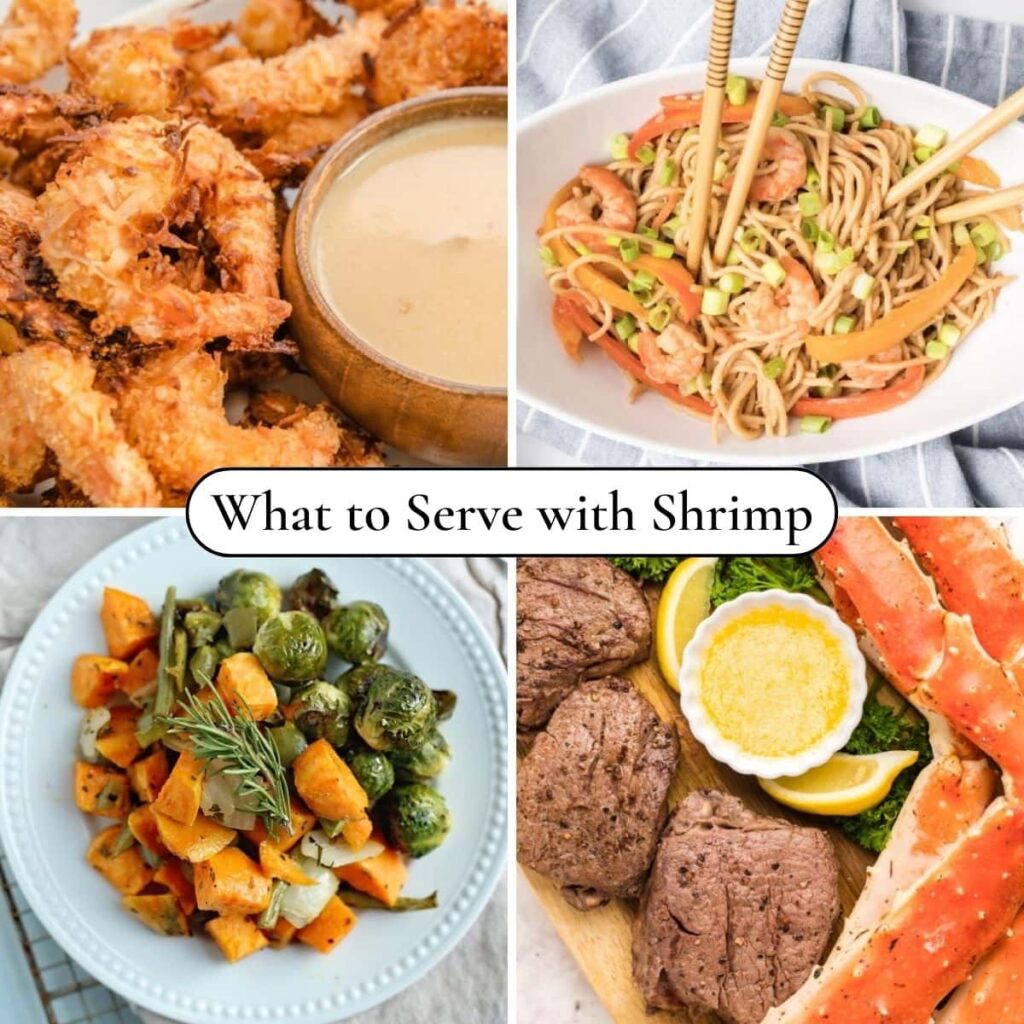What Goes Well with Shrimp
Shrimp is a versatile seafood that pairs beautifully with a wide range of flavors and ingredients. Its mild sweetness and firm texture make it suitable for various cuisines, from Asian to Mediterranean. Here, we will explore popular pairings, cooking methods, and recipes that highlight shrimp’s culinary potential.
Flavor Profiles that Complement Shrimp
- Citrus: Lemon, lime, and orange enhance shrimp’s natural sweetness and add a refreshing acidity.
- Garlic and Herbs: Fresh herbs like parsley, cilantro, and basil, along with garlic, provide aromatic depth.
- Spices: Cumin, paprika, chili powder, and black pepper add warmth and complexity.
- Butter and Olive Oil: Rich fats help to create a luscious mouthfeel and enhance flavors.
- Vegetables: Bell peppers, asparagus, and zucchini offer texture and color, while also balancing the dish.
- Starches: Rice, pasta, and potatoes serve as hearty bases that absorb flavors and provide sustenance.
Cooking Methods
- Grilling: Imparts a smoky flavor and beautiful char marks.
- Sautéing: Quick cooking method that retains shrimp’s juiciness.
- Boiling: Ideal for making shrimp cocktails or adding to soups.
- Baking: Allows for the infusion of flavors from spices and herbs.
Types of Shrimp
Understanding the different types of shrimp can enhance your culinary experience. Here are some of the most common varieties:
1. Wild-Caught Shrimp
Wild-caught shrimp are harvested from oceans and rivers. They tend to have a firmer texture and a more robust flavor compared to farmed shrimp. Popular types include:
- Gulf Shrimp: Known for their sweet flavor and firm texture, they are often used in Southern cooking.
- Black Tiger Shrimp: Recognizable by their distinctive stripes, they are large and have a strong flavor.
2. Farmed Shrimp
Farmed shrimp are raised in controlled environments. They are more widely available and often less expensive. Common types include:
- White Shrimp: Mild in flavor and tender, they are popular in various cuisines.
- Pacific White Shrimp: Known for their sweetness and versatility, they are often used in Asian dishes.
3. Prawns vs. Shrimp
While often used interchangeably, prawns and shrimp are different species. Prawns are generally larger and have a sweeter flavor. They are often used in dishes that require grilling or sautéing.
Cooking Techniques for Shrimp
Sautéing
Sautéing shrimp is a quick and effective way to cook them while preserving their natural flavors. Here’s a simple method:
- Ingredients: Shrimp, olive oil, garlic, salt, and pepper.
- Instructions:
- Heat olive oil in a skillet over medium-high heat.
- Add minced garlic and sauté for about 30 seconds.
- Add shrimp and season with salt and pepper.
- Cook for 2-3 minutes on each side until they turn pink and opaque.
Grilling
Grilling shrimp adds a smoky flavor and is perfect for outdoor gatherings. Here’s how to do it:
- Ingredients: Shrimp, marinade (olive oil, lemon juice, garlic, herbs).
- Instructions:
- Marinate shrimp for at least 30 minutes.
- Preheat the grill to medium-high heat.
- Thread shrimp onto skewers.
- Grill for 2-3 minutes on each side until cooked through.
Boiling
Boiling shrimp is ideal for making shrimp cocktails or adding to soups. Here’s a straightforward method:
- Ingredients: Shrimp, water, salt, lemon, and bay leaves.
- Instructions:
- Fill a pot with water, add salt, lemon, and bay leaves, and bring to a boil.
- Add shrimp and cook for 2-3 minutes until they turn pink.
- Drain and cool before serving.
Baking
Baking shrimp allows for a hands-off approach while infusing flavors. Here’s a simple recipe:
- Ingredients: Shrimp, breadcrumbs, garlic, parsley, and olive oil.
- Instructions:
- Preheat the oven to 350°F (175°C).
- Toss shrimp with breadcrumbs, minced garlic, parsley, and olive oil.
- Spread on a baking sheet and bake for 10-12 minutes until shrimp are cooked through.
Popular Shrimp Dishes
1. Garlic Butter Shrimp
- Ingredients: Shrimp, garlic, butter, parsley, lemon juice.
- Instructions: Sauté garlic in butter, add shrimp, cook until pink, finish with lemon juice and parsley.
2. Shrimp Tacos
- Ingredients: Shrimp, corn tortillas, cabbage, avocado, lime, cilantro.
- Instructions: Grill shrimp, assemble in tortillas with toppings, and drizzle with lime juice.
3. Shrimp Scampi
- Ingredients: Shrimp, garlic, white wine, butter, parsley, pasta.
- Instructions: Sauté garlic in butter, add shrimp and wine, serve over pasta with parsley.
4. Shrimp Fried Rice
- Ingredients: Shrimp, rice, peas, carrots, soy sauce, green onions.
- Instructions: Stir-fry vegetables, add shrimp, mix in rice and soy sauce until heated through.
Nutritional Information
Shrimp is not only delicious but also packed with nutrients. It is low in calories and high in protein, making it a healthy choice for many diets.
| Nutrient | Per 100g of Shrimp |
|---|---|
| Calories | 85 |
| Protein | 20g |
| Fat | 1g |
| Carbohydrates | 0g |
| Cholesterol | 150mg |
FAQ Section
1. What are the best sauces to serve with shrimp?
Common sauces include garlic butter, cocktail sauce, tartar sauce, and spicy aioli.
2. Can shrimp be frozen?
Yes, shrimp can be frozen. It is best to freeze them raw and in their shells for optimal flavor.
3. How do you know when shrimp is cooked?
Shrimp is cooked when it turns pink and opaque. Overcooking can make it rubbery.
4. What are some common side dishes for shrimp?
Popular sides include coleslaw, rice pilaf, garlic bread, and mixed vegetables.
5. Are there any dietary restrictions with shrimp?
Shrimp is a shellfish, so individuals with shellfish allergies should avoid it. It is also high in cholesterol.
Conclusion
Shrimp is a delightful ingredient that can be prepared in numerous ways, making it a favorite among seafood lovers. Its ability to pair with a variety of flavors and cooking methods makes it a staple in many cuisines worldwide.For further reading on shrimp, you can refer to the Wikipedia page on Shrimp for comprehensive information on its biology, species, and culinary uses.



